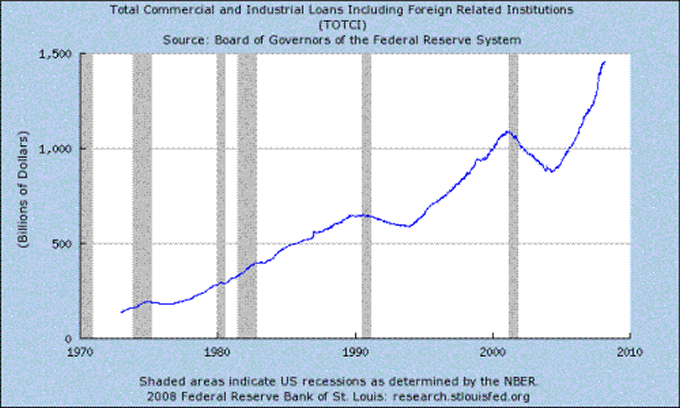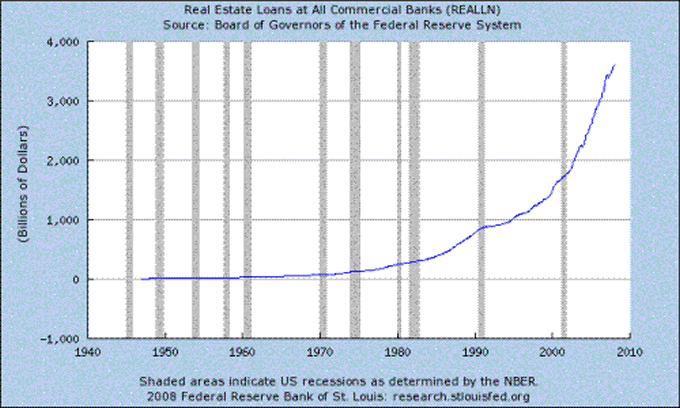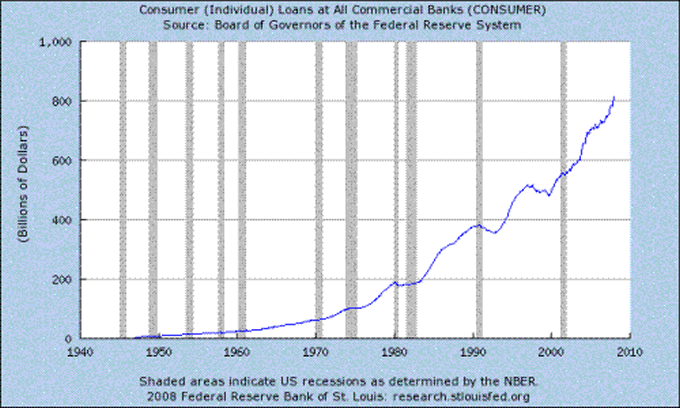Patchy Nature of the Credit Crisis
Economics / Credit Crisis 2008 Mar 13, 2008 - 06:16 PM GMTBy: Michael_Pento

 The strange thing about myths is that while some have their basis in truth, for the most part they suffer from a dearth of reality. The same is true about today's well promulgated credit crisis. First let me admit, there clearly is a crisis in certain areas of the credit markets. For instance, there is definitive evidence of duress for hedge funds that hold Credit Default Obligations, especially in leveraged portfolios. A crunch also exists for mortgage lending companies that must issue asset-backed commercial paper.
The strange thing about myths is that while some have their basis in truth, for the most part they suffer from a dearth of reality. The same is true about today's well promulgated credit crisis. First let me admit, there clearly is a crisis in certain areas of the credit markets. For instance, there is definitive evidence of duress for hedge funds that hold Credit Default Obligations, especially in leveraged portfolios. A crunch also exists for mortgage lending companies that must issue asset-backed commercial paper.
There also is a crisis evident for consumers with bad credit and few assets. However, at this moment in time, the crisis is mostly limited to the above examples and to the investment banks on Wall Street. The overall commercial banking & lending environment remains quite healthy.
According to Federal Reserve economic data, we see robust activity occurring in most areas of commercial bank lending. The following graphs depict lending activity in four key areas of the economy.




The facts are that for commercial and industrial loans, the year-over-year growth rate in lending is 19%; for real estate loans it is 5%; for Consumer loans it is 8%; and for total loans and leases it is 10%. This healthy lending environment exists even after the banking sector has endured over two years of contracting real estate prices and eight months following the so called bursting of the credit bubble.
I know this runs counter to everything you hear, see and read today but the truth is that while the banks are still lending at historically robust levels, we see the Fed pumping in yet more liquidity through rate cuts and other "tools" like the Treasury Securities Lending Facility. Thus, the Fed's pumping and printing activity today is merely an attempt to compel banks to increase lending even further . If money supply growth is so strong (M3 y-o-y growth is 18%), why try to force banks to lend more? The answer is that the Fed plans on increasing the money supply and real estate loan volume until home prices cease contracting. This is all there is to its ultimate plan for rescuing the economy and balance sheets of investment banks.
Put another way, the Fed is trying to bail out certain investment banks on the back of the currency and at the expense of savers-- simple cronyism in its most base form.
What the Fed and Wall Street do not understand is that printing money never has and never will be able to create true economic growth. Printing money beyond the productive capacity of an economy always leads to higher prices, hence today's inflationary pressures which can no longer be ignored. As more investors come to understand these facts, it is clear why precious metals, energy, the CRB index and the dollar all point to higher inflation. The real crisis exists on Wall Street, and for investors who are unable or unwilling to protect themselves from surging inflation.
I discuss this rate cutting nonsense and more in my new podcast, the Mid-Week Reality Check . Five minutes of sanity in an insane financial world!
Michael Pento
Senior Market Strategist
Delta Global Advisors
800-485-1220
mpento@deltaga.com
www.deltaga.com
With more than 16 years of industry experience, Michael Pento acts as senior market strategist for Delta Global Advisors and is a contributing writer for GreenFaucet.com . He is a well-established specialist in the Austrian School of economic theory and a regular guest on CNBC and other national media outlets. Mr. Pento has worked on the floor of the N.Y.S.E. as well as serving as vice president of investments for GunnAllen Financial immediately prior to joining Delta Global.
Michael Pento Archive |
© 2005-2022 http://www.MarketOracle.co.uk - The Market Oracle is a FREE Daily Financial Markets Analysis & Forecasting online publication.


